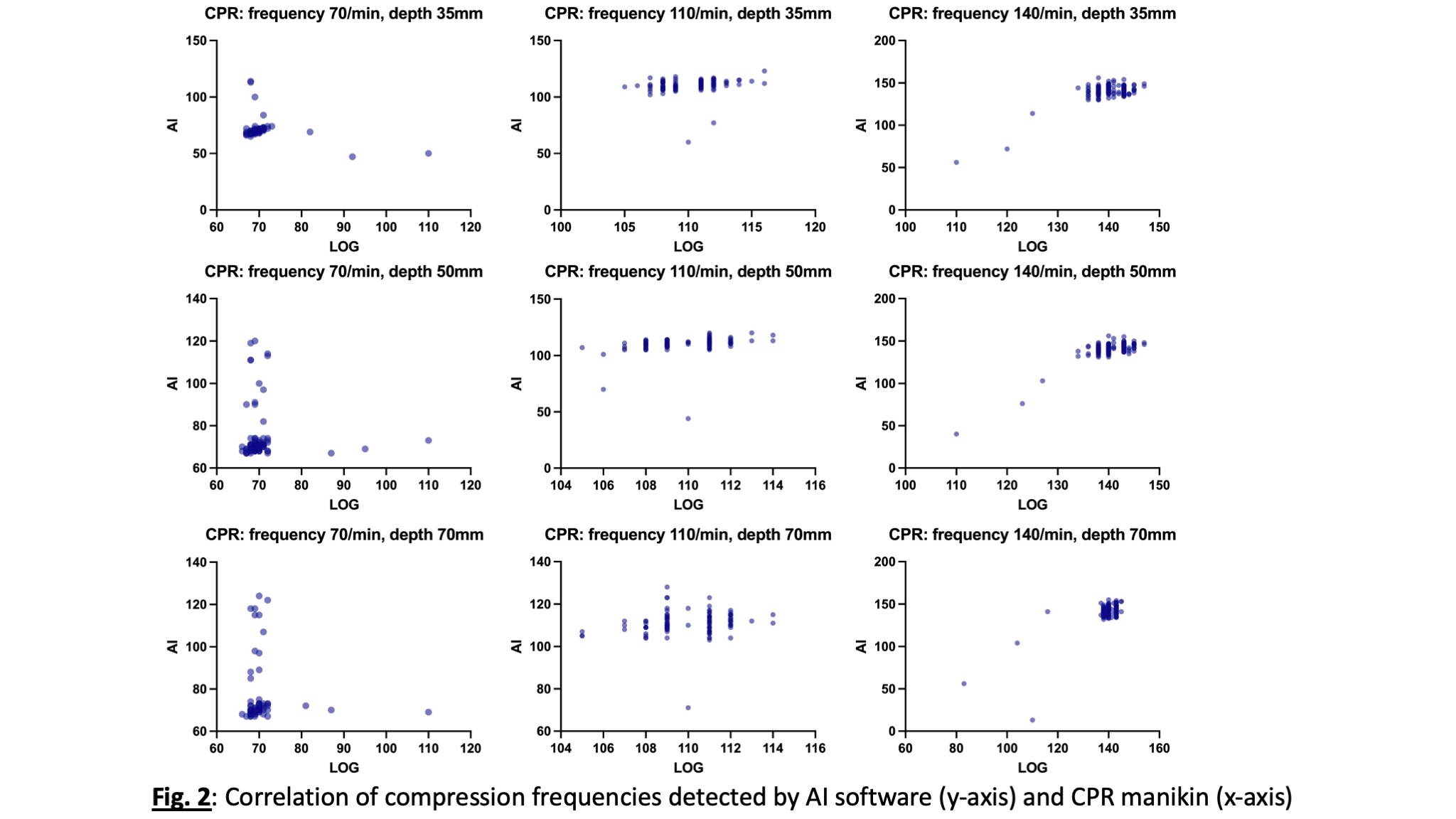Final ID: Su802
Feasibility of detecting CPR compression frequency using machine-learning software in video footage of CPR
Abstract Body: Background: Several studies have demonstrated that video assisted cardiopulmonary resuscitation (V-CPR) is efficient in improving cardiopulmonary resuscitation (CPR) quality and patient outcome. However, currently the technique depends on 911 dispatchers who evaluate the video footage and may thus be subject to inter-operator variations.
Research question: We hypothesized that using an open-source machine learning supported software (“artificial intelligence” – AI) would be able to provide real-time feedback on CPR frequency in a video of CPR.
Aims: To evaluate the feasibility and accuracy of a selected AI software to correctly detect the actual compression frequency in video footage of CPR performed in a CPR manikin.
Methods: MediaPipe Pose Landmark Detection (Google LLC, Mountain View, CA, USA), an open-source AI software using machine-learning models to detect human body postures in images and videos, was programmed to assess compression frequency of nine videos showing CPR on a manikin, each with a different fixed compression frequency and compression depth. Camera angle and distance were standardized. Frequency was assessed from compression to compression with AI software and the manikin’s internal software (QCPR, Laerdal, Stavanger, Norway). After testing for Gaussian distribution, means were compared using Wilcoxon matched-pairs signed rank test.
Results: There were high levels of agreement between compression frequencies derived from AI and manikin’s software (Statistic comparisons are presented in Figure 1, correlations of measurements are presented in Figure 2 ).
Conclusions: In this pilot study, an open-source landmark detection AI software was able to assess CPR compression frequency with high agreement to actual frequency derived from a CPR manikin. Since the software used is currently not intended for medical use, further development is necessary before the technology can be evaluated for real-life CPR.
Research question: We hypothesized that using an open-source machine learning supported software (“artificial intelligence” – AI) would be able to provide real-time feedback on CPR frequency in a video of CPR.
Aims: To evaluate the feasibility and accuracy of a selected AI software to correctly detect the actual compression frequency in video footage of CPR performed in a CPR manikin.
Methods: MediaPipe Pose Landmark Detection (Google LLC, Mountain View, CA, USA), an open-source AI software using machine-learning models to detect human body postures in images and videos, was programmed to assess compression frequency of nine videos showing CPR on a manikin, each with a different fixed compression frequency and compression depth. Camera angle and distance were standardized. Frequency was assessed from compression to compression with AI software and the manikin’s internal software (QCPR, Laerdal, Stavanger, Norway). After testing for Gaussian distribution, means were compared using Wilcoxon matched-pairs signed rank test.
Results: There were high levels of agreement between compression frequencies derived from AI and manikin’s software (Statistic comparisons are presented in Figure 1, correlations of measurements are presented in Figure 2 ).
Conclusions: In this pilot study, an open-source landmark detection AI software was able to assess CPR compression frequency with high agreement to actual frequency derived from a CPR manikin. Since the software used is currently not intended for medical use, further development is necessary before the technology can be evaluated for real-life CPR.
More abstracts on this topic:
Adapting Chest Compressions to Variable Chest Dynamics in Out-of-Hospital CPR
Uriguen Jose Antonio, Leturiondo Mikel, Daya Mohamud, Russell James
Latest Insights in Drug-Induced Kounis Syndrome: A Systematic Review 2024Shiza Saher, Ong Kenneth, Suhagiya Gaurang, Nazar Tazeen, Ahmed Zahoor


